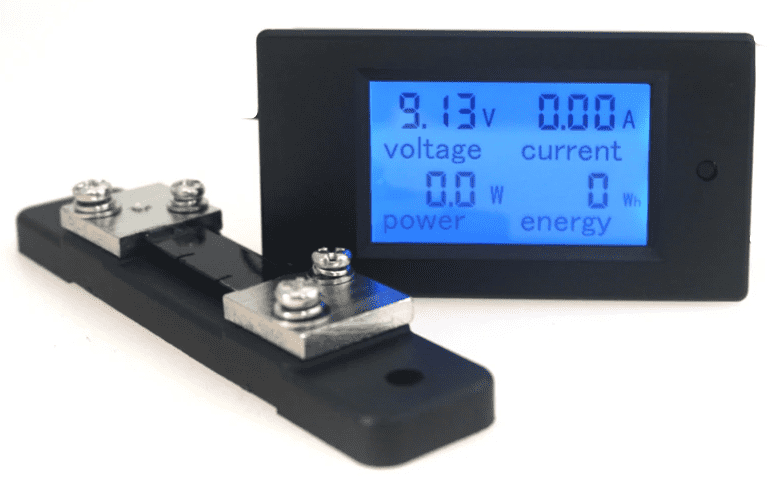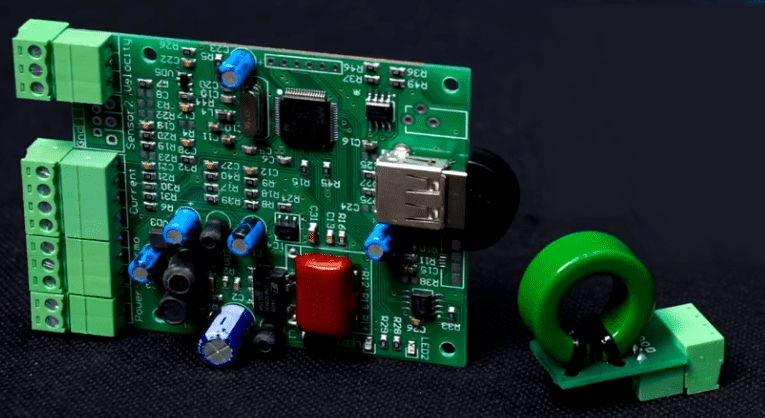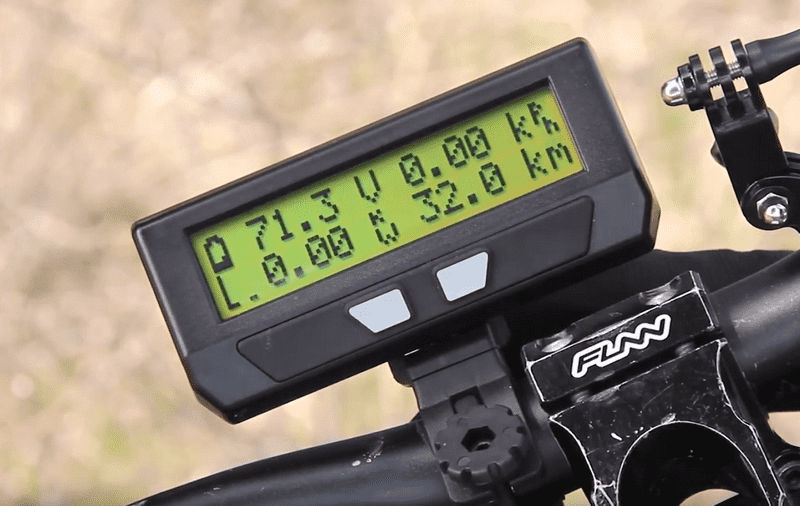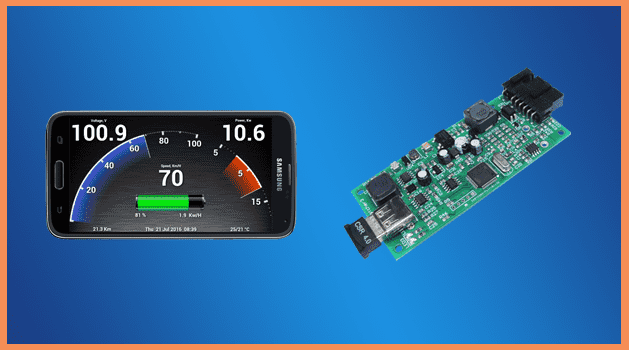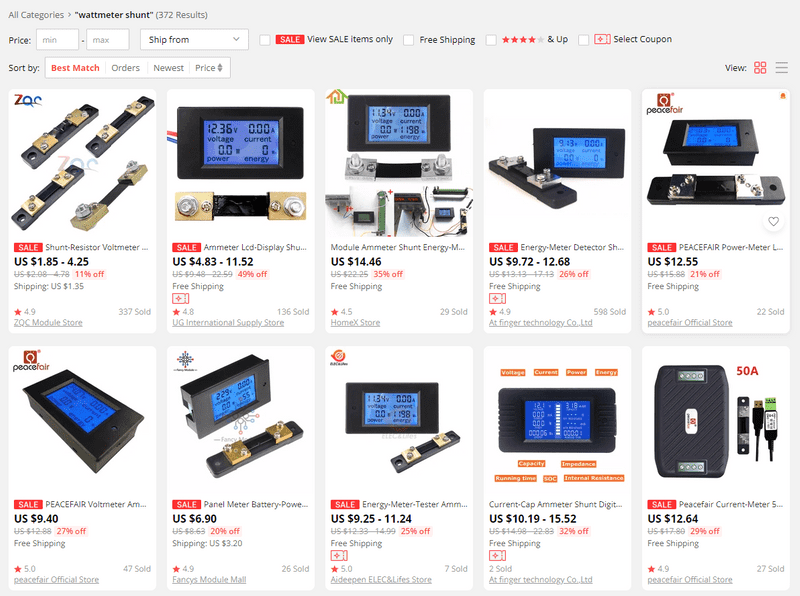Dashboards for E-Bikes and Other EV Systems
There are so many different electric vehicles on the market today. Many of them have unique characteristics of their battery capacity, power, and torque. But sometimes it’s hard to know if those characteristics are actually true.
With the help of devices such as EV dashboards and wattmeters, each owner of an electric vehicle has the opportunity to monitor its all main technical parameters.
You can control the energy consumption of the battery in different modes of movement, receive a lot of useful information in real-time such as:
- Amper/Hours Spent | Total Amper/Hours
- Watt/Hours Spent | Total Watt/Hours
- Amper/Hour Recuperation | Watt/Hour Recuperation
- Charge Level
- Cycle Count
- Min Voltage | Max Voltage
- Max Current
- Max Speed | Average Speed
- Temperature
- Distance
So, let’s look at the different dashboards that are currently available on the market, their main features and benefits.
Shunt vs Hall effect
According to the method of measuring current, these devices are divided into devices with an external shunt and Hall effect devices.
External shunt devices
An External shunt is basically a resistor on which the voltage drops and from this, the device is able to calculate the current.
In general, devices with an external shunt are more accurate since the Earth’s magnetic field does not affect measurements. Usually, the shunt is made of materials that change their resistance very slightly when temperature change.
However, you may run into some inconveniences during the installation of the device with the shunt, since they are connected in line. You need to plug the source wire into the battery and the load wire into the controller.
Hall effect devices
Hall effect units measure the magnetic field and based on its intensity the device then can make assumptions about the current that flows through the conductor.
The Hall effect sensor can be installed anywhere without breaking the circuit. All you need is just pass the wire into the ring and everything is ready for measurements.
Of course, Hall effect sensors have their disadvantages: the measurement accuracy is about two percent lower than in shunt devices, they’re less reliable and more expensive to make.
Hall effect sensors tend to break when exposed to high temperatures and voltages. Therefore, you may have to buy some spare ones just in case.
Generally, Hall effect sensors offer a more convenient way to achieve accurate current measurements.
Cycle Analyst
Probably the most well-known device among the E-Bike enthusiasts is the Cycle Analyst.
It’s a standalone device that can be mounted on the steering wheel, connected to the shunt and that’s pretty much it, - it’s ready to start monitoring your bike. There’s no need in any additional phone screen or display to use it.
Cycle Analyst is a pretty high-quality device. It’s waterproof, has rubber buttons, so you can use it when at the beach, on a snowy mountain, or during rainy weather.
One of the distinguishing features of this device is the ability to connect throttle. With that, if the controller can’t limit the maximum power, it can be limited with the help of throttle.
If you drive a long distance, this also allows to set up an auto cruise behavior, which allows the cyclist not to constantly hold the throttle to the point when their hands get really tired.
At the current price range (around 120 $) you really can’t call this device cheap, but if you buy this little guy, you can be sure that it’s a rock-solid companion for your electric vehicle.
Power Watcher
This device allows you to measure all the basic technical parameters of both the motor and batteries, and receive in real-time a lot of other, useful information.
Unlike some other simple wattmeters, Power Watcher can measure speed, which, in turn, allows to calculate averages for power consumption, available distance per 1 kW/h and other parameters.
Power Watcher can be powered from voltage up to 200 volts and is powered from the same source that it measures. When using an external power source, the upper threshold of the measured voltage goes up to 600 V.
The latest version of the device (PW v.3) now has a RS 485 bus on board. Due to this, you can connect additional devices such as digital current and voltage sensors, CAN bus scanner, LCD display, thus expanding the functionality of Power Watcher.
At an affordable price of 67$ this device offers a wide range of features, and since it’s now in active development, you can confidently expect some new ones being added in the future.
Powermeters and wattmeters from Aliexpress
There are a lot of them on the market. But many of them have one particular disadvantage - they can measure the current that goes only in one direction, for example, positive current (consumption). In other words, they can measure only charge or only discharge.
These devices may have different variants. Some of them have a built-in shunt capable of measuring currents up to 20 A, and also variants with a remote shunt that measures currents up to 300 A.
Another slight inconvenience of these low-budget wattmeters is that they have a certain upper measurement threshold above which the device needs to be provided with the additional power source.
For instance, the device can measure currents up to 100 V but needs to be powered from 6 V.
Rightfully so, you may ask why are they so popular? Because they’re cheap. The price of such devices is considerably lower (10 - 30 $) than the price of mentioned above Cycle Analyst.
Again, it all depends on your needs. Sometimes you don’t need to measure negative currents, so why pay for not-needed functionality? Not to mention that this additional functionality makes the device more technically complex and error-prone.
Conclusions
So, which dashboard should I choose? Well, the answer here is - it depends. How you intend to use it, your vehicle placement options, budget, and if you intend to use it with more than one bike.
